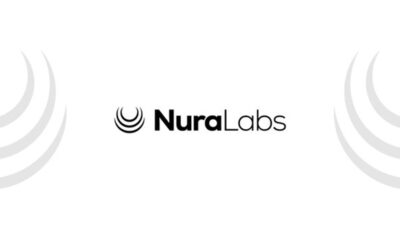Business
Food Enzymes Market Size, Regional Outlook, Competitive Landscape, Revenue Analysis & Forecast Till 2028

Increasing health consciousness and rising food & beverage sector demand are two major factors propelling the growth of the global food enzymes market.
According to the most recent report by Emergen Research, the size of the global market for food enzymes is anticipated to reach USD 3,309.9 million in 2028 at a revenue CAGR of 6.1%. Rising demand for food enzymes from the food and beverage industry is the primary cause of the market’s consistent revenue growth. Enzymes are utilised in a variety of processes, including the manufacturing of cheese, bread goods, fruit, starch, and beverages and drinks.
Additionally, the public is constantly shifting toward food categories with more value-added ingredients, and their pursuit of health is having a significant impact on the nutritional products. Consumer preference for nutrient-dense, healthy food is growing as a result, which in turn encourages food processors to produce more of it. As a result, manufacturers of nutritional foods are progressively adding enzymes to their goods to meet the population’s increasing demand for nutrition, which is fueling the expansion of the worldwide food enzymes market.
Technological advancements and novel product types are projected to create significant growth opportunities for the food enzymes market in the coming years. Increasing demand for convenient and packaged foods, as well as growing population, is expected to drive the market during the forecast period.
Food enzymes are proteins that catalyze biochemical reactions in food systems. They are used in various applications such as baking, brewing, dairy processing, fruit & vegetable processing, meat processing, and others. Food enzymes are produced from natural sources such as animals, plants, and microorganisms. Animal-sourced enzymes include rennet and pancreatin. Plant-sourced enzymes include papain and bromelain. Microbial enzymes include amylases, proteases, lipases, and cellulases.
The expanding economies of the Asian continent are largely to blame for the surge in the demand for processed foods worldwide. The key forces behind the significant expansion of the processed food business are China and India. Because of the growing middle-class population and their increasingly high disposable budgets, together with their busy lifestyles, this industry is expanding. Applications of food enzymes increase the freshness of finished products, extending the convenience food’s shelf life while also preserving its flavour, colour, and texture.
Convenience food market expansion directly contributes to market expansion for food enzymes. In “on-the-go” convenience foods, food enzymes play a significant role in lowering the danger of microbial deterioration and simplifying the food processing stages. Additionally, health awareness is growing due to the significant educated consumer population in industrialised nations. This has a favourable effect on the market for food enzymes’ growth rate.
Key Highlights:
During the anticipated period, the market will be dominated by the sector of carbohydrases. They are divided into three groups: cellulases, amylases, and other carbohydrases (such as pectinases, lactases, mannanases, and pullulanases). Carbohydrases are utilised in food applications to serve a variety of industries, including dairy, processed food, bakery & confectionery, etc. Due to their affordability, reduced time and space consumption, and ease of process customization and optimization, they have advantages over other food applications.
Due to the expanding use of enzymes in the food and beverage sector, there is a major increase in demand for food enzymes. Applications for meat processing, dairy products, baked goods, nutraceuticals, and other food products are among the food & beverage products taken into consideration for this study (such as processed fruits & vegetables, processed food, and vegetable oil processing). Peptides and amino acids are produced by enzymatic hydrolysis of vegetable and yeast proteins, which is used to create soups, sauces, ready-to-eat meals, canned goods, and frozen food products. These reasons contribute to the enormous need for enzymes in the food industry.
| Parameters | Details |
| Market Size Estimation Period | 2020 – 2028 |
| Base Year Considered | 2019 |
| Historical data | 2015 – 2019 |
| Forecast Period | 2020 – 2028 |
| Quantitative Units | Revenue in USD million and CAGR from 2020 to 2028 |
| Segments Covered | Types, Applications, End-Users, Regions and more. |
| Report Coverage | Revenue Forecast, Company Ranking, Competitive Landscape, Growth Factors, and Trends |
| Regional Scope | North America, Europe, Asia Pacific, Latin America, Middle East and Africa |
| Customization scope | 10 hrs of free customization and expert consultation |
| Pricing and purchase options | Explore Different Purchase Options and Request for Discount to Avail New Year Discount |
Food Enzymes Market Segmentation:-
Source Outlook (Revenue, USD Million; 2018–2028)
- Microorganisms
- Animals
- Plants
Product Type Outlook (Revenue, USD Million; 2018–2028)
- Carbohydrase
- Amylase
- Cellulase
- Lactase
- Others
- Protease
- Lipase
- Polymerases
- Nucleases
- Others
Application Outlook (Revenue, USD Million; 2018–2028)
- Food
- Bakery & Confectionery Products
- Meat Products
- Dairy Products
- Nutraceuticals
- Others
- Beverages
- Brewing Products
- Juices
- Fortified Beverages
- Others
-

 Foreign Policy5 days ago
Foreign Policy5 days agoInside Schedule F: Will Trump’s Federal Workforce Shake-Up Undermine Democracy?
-

 Press Release5 days ago
Press Release5 days agoIn2space Launches Campaign to Make Space Travel Accessible for All
-

 Press Release11 hours ago
Press Release11 hours agoNura Labs Files Revolutionary Patent: AI-Powered Wallet Solves the $180 Billion Crypto Staking Complexity Crisis















